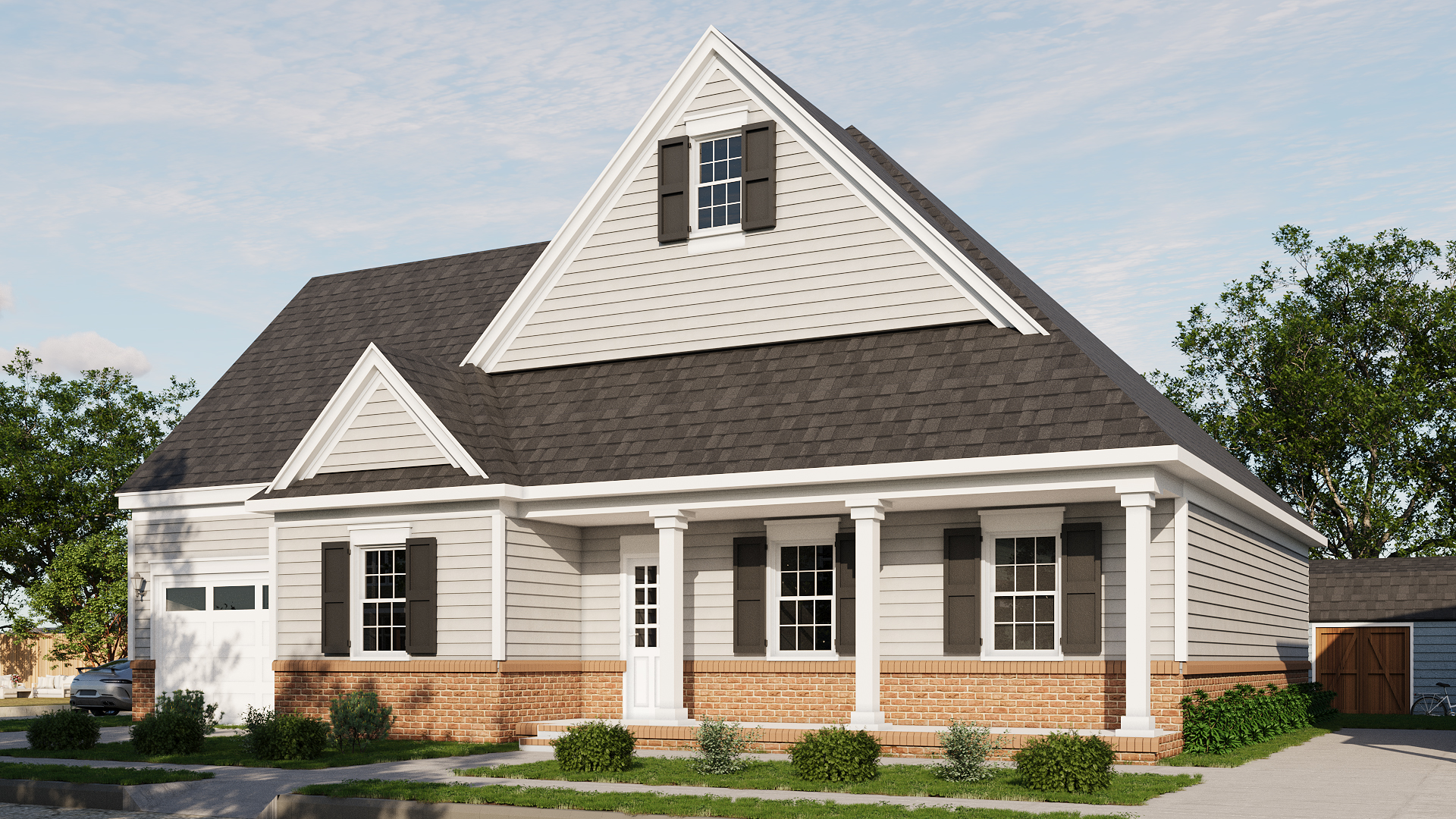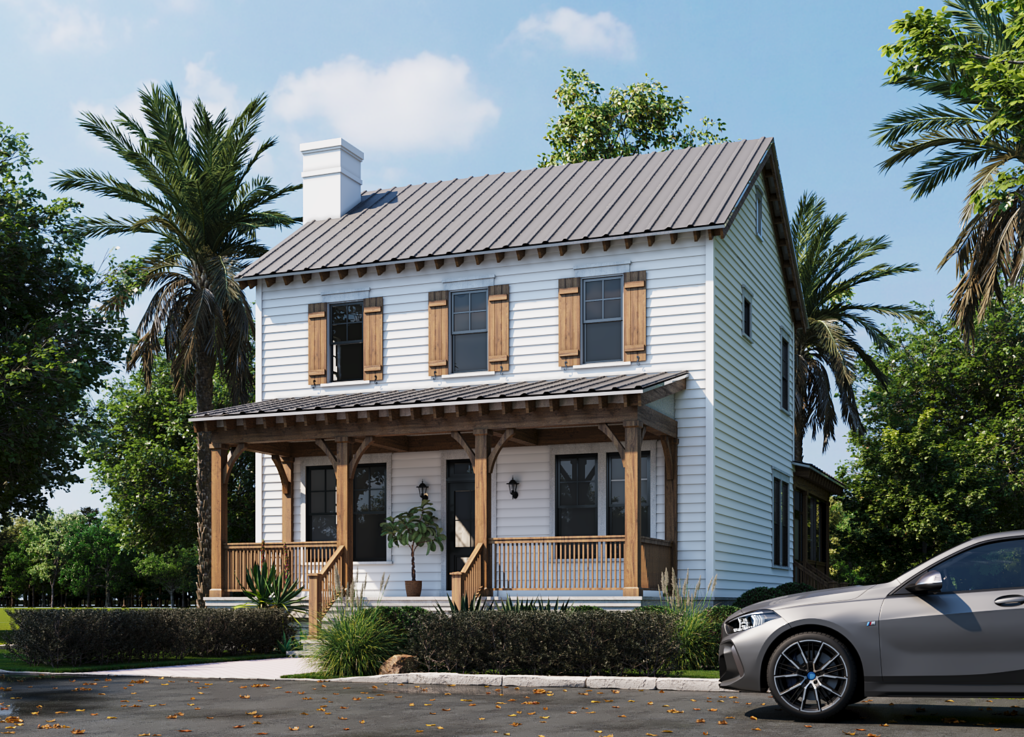
7 Benefits of Using 3D Rendering in Sustainable Architectural Projects
Sustainable architecture is rapidly gaining momentum as architects, developers, and construction professionals recognize the importance of designing eco-friendly buildings that minimize environmental impact. To fully realize these projects, 3D rendering has emerged as a powerful tool, transforming how architects and developers approach sustainability. High-quality 3D rendering not only brings architectural designs to life but also plays a pivotal role in promoting sustainability by facilitating better planning, communication, and decision-making. This blog will explore the seven key benefits of using 3D rendering in sustainable architectural projects.
1. Enhanced Visualization of Eco-Friendly Materials and Techniques
One of the most significant advantages of 3D rendering in sustainable architecture is the ability to visualize how eco-friendly materials and green building techniques will look in a completed project. Traditional blueprints and 2D drawings can make it difficult for stakeholders to envision how sustainable elements such as solar panels, green roofs, or energy-efficient windows will be integrated into a design.
With 3D rendering, architects can create detailed, photorealistic images that show how these materials and techniques will function within the design. This helps stakeholders see the project’s green features and how they contribute to the overall aesthetics and functionality of the building.
2. Facilitating Sustainable Design Adjustments
Sustainable architecture often requires frequent adjustments throughout the design process to maximize energy efficiency and reduce the carbon footprint. 3D rendering allows architects to test and refine design elements, making it easier to tweak features such as natural lighting, ventilation, and insulation to meet sustainability goals.
For instance, architects can use 3D rendering to simulate how sunlight will interact with a building throughout the day. By adjusting window placements or adding shading devices in the rendered model, designers can optimize energy consumption, improve occupant comfort, and reduce the need for artificial lighting or air conditioning.
3. Improved Communication with Clients and Stakeholders
Sustainable architectural projects often involve multiple stakeholders, including developers, government bodies, investors, and community members. Effectively communicating complex sustainable design concepts to these groups can be challenging, especially when some stakeholders may not have a technical background.
3D renderings serve as a universal language that makes it easier to explain green building initiatives to clients and stakeholders. With visually rich and immersive 3D models, everyone involved in the project can better understand the sustainable features of the design, whether it’s a green roof, energy-efficient systems, or rainwater harvesting methods. This improved communication fosters buy-in and ensures that all parties are aligned on sustainability goals.
4. Efficient Environmental Impact Assessment
3D rendering also plays a crucial role in assessing the environmental impact of architectural projects. By using digital tools and simulations, architects can analyze how a building will interact with its natural surroundings. For example, they can evaluate factors such as wind patterns, sunlight exposure, and topography to determine the most sustainable orientation for the building and decide on eco-friendly construction methods.
This ability to predict and mitigate environmental impacts early in the design process makes it easier to adhere to environmental regulations and certifications such as LEED (Leadership in Energy and Environmental Design). As a result, 3D rendering not only improves the design’s sustainability but also streamlines the approval process for green building certifications.

5. Reducing Waste in Construction
Sustainable architectural projects aim to reduce waste during both the construction phase and the building’s lifetime. One of the primary ways 3D rendering contributes to this goal is by allowing architects and contractors to create precise, detailed models that reduce errors and miscommunication.
In traditional construction, inaccurate drawings and poor planning can lead to costly mistakes, material waste, and time delays. With 3D rendering, every aspect of the design is visualized in detail, ensuring that construction teams have a clear understanding of the project before breaking ground. This minimizes the likelihood of rework, reducing material waste and making the construction process more efficient.
6. Cost Savings and Budget Management
Sustainability and cost-efficiency go hand in hand. While sustainable materials and technologies may sometimes have higher upfront costs, they provide long-term savings in energy efficiency, reduced maintenance, and lower utility bills. 3D rendering can help developers and architects balance sustainability with cost-effectiveness by providing accurate projections of building performance and energy consumption.
With 3D renderings, architects can calculate energy savings based on factors such as daylight penetration, insulation levels, and passive heating or cooling strategies. This data allows developers to make informed decisions on where to allocate their budget, ensuring that the project remains both green and cost-efficient. Moreover, it helps investors and clients understand the long-term financial benefits of sustainable architecture.
7. Supporting Marketing and Promotion of Green Projects
In today’s environmentally conscious market, sustainability is a strong selling point for developers and architects alike. Using 3D renderings to market and promote sustainable architectural projects can give firms a competitive edge, attracting eco-conscious buyers, tenants, and investors.
With visually striking and interactive 3D models, developers can showcase their commitment to green building practices in a way that resonates with clients. High-quality renderings of energy-efficient buildings, eco-friendly materials, and sustainable designs help developers position themselves as leaders in the industry, while also demonstrating how the project aligns with environmental goals.
Additionally, 3D rendering can be integrated into virtual tours, websites, and promotional materials, giving clients an immersive experience that emphasizes the sustainability features of the project. This visual storytelling can play a crucial role in driving interest and securing contracts for sustainable architectural developments.
Conclusion
3D rendering is a game-changer for sustainable architectural projects, providing architects and developers with the tools they need to visualize, communicate, and refine their designs while maximizing eco-friendly outcomes. By offering enhanced visualization, facilitating design adjustments, and improving communication, 3D rendering plays an essential role in bringing green building concepts to life. Furthermore, it helps reduce construction waste, manage costs, and support the marketing and promotion of sustainable projects.
As sustainability continues to shape the future of architecture, 3D rendering will remain an indispensable tool for realizing these ambitious, environmentally responsible designs. By integrating 3D rendering into their workflow, architects and developers can create projects that are not only visually stunning but also sustainable, efficient, and aligned with the growing demand for eco-conscious buildings.


